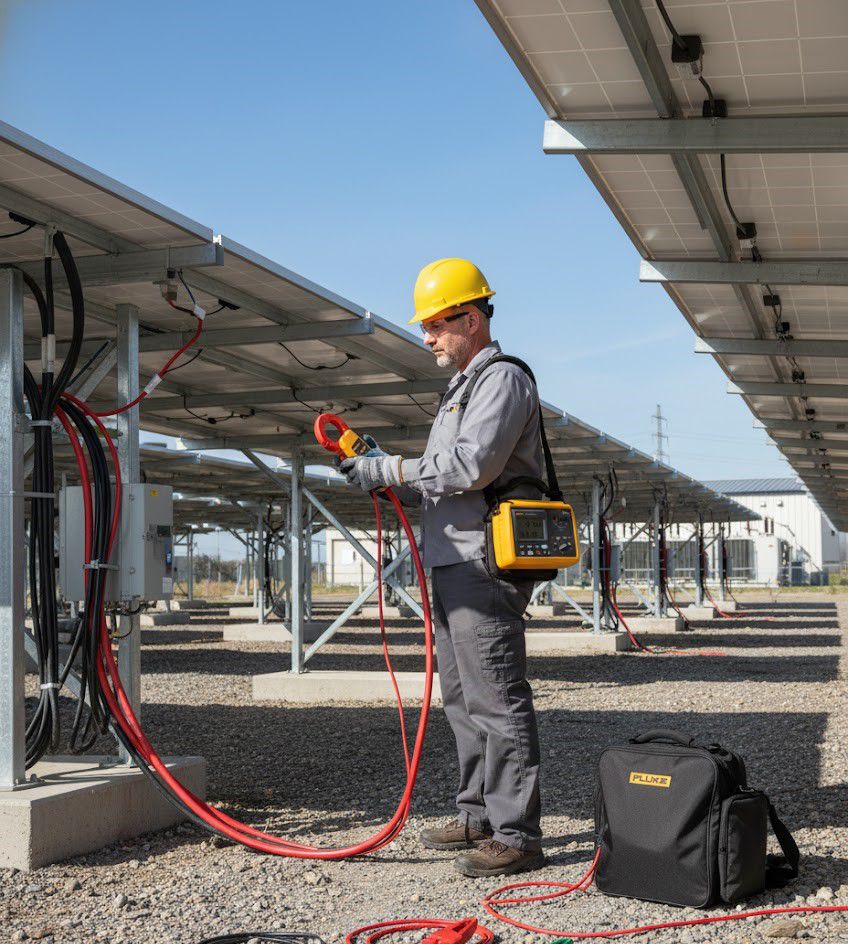Ground Fault Locator
How to Locate Faults While the Electrical System is Still Running and Why Humidity and Temperature Worsen Ground Faults
Ground faults (earth faults) are common issues that appear frequently in factories, hospitals, data centers, and other electrical systems requiring high stability. The difficulty is that this type of fault does not always trip the circuit breaker, meaning the machinery keeps running, but the system is quietly suffering from current leakage. Operators must find the exact location of the damage without being allowed to cut the power, as stopping for just a few minutes can disrupt production or compromise safety.
In practice, fault detection while the power is still on relies on specialized signal generators and receivers. This is the common principle used by ground fault locator devices from the four brands that EMIN distributes: ETCR, FLUKE, Kongter, and Windidu. Models from these manufacturers are widely used by technical teams to track the direction of the leakage current and quickly pinpoint the earth fault location while the system remains operational.

The Principle of Locating Ground Faults While the System is Active
Fault locators typically inject a high-frequency current (often tens to hundreds of kHz) into the system. This signal does not interfere with the 50-60Hz power being supplied to the machinery. As the signal travels through the cable network, it will preferentially flow towards the fault point because that is the path of least impedance.
The technician simply walks along the cable route, taking measurements with a high-frequency current clamp. When nearing the faulty cable branch, the signal will increase distinctly, and the direction of the leakage current will be displayed. With just a few checks, the damage area can be isolated, even while the entire system is still running.
In Isolated (IT) systems, monitoring equipment also measures the change in voltage between the phases and the ground, which allows it to calculate the level of fault impedance. This enables maintenance personnel to assess the hazard level of the damage before deciding on a fix.
For solar power systems, the leakage current is DC. In this case, the DC fault locator uses highly sensitive magnetic field sensors to detect the very small current flowing from the wiring to the panel frame without having to cut wires or remove the solar panels.
Why Do Ground Faults Get Worse in Humid Weather or When the System Heats Up?
The reason stems from two environmental factors: water and heat.
Humidity Reduces Insulation Quality
When water penetrates the insulation layer, the surface resistance drops sharply. Even a thin layer of moisture is enough to create a weak conductive path, causing the leakage current to spike suddenly. Faults in humid areas, during rainy or foggy days, or in industrial zones with high steam often appear intermittently, turning on and off unpredictably.
Water combined with dirt can also form an electrolyte solution that adheres to connection points, causing corrosion of copper or aluminum. The insulation layer becomes brittle, cracked, or peeled, creating conditions that accelerate current leakage.
Temperature Causes Material Degradation
Insulation materials consistently reduce their performance when heated. High temperatures break down the polymer structure, making the insulation layer brittle and prone to cracking. In continuously running systems, repeated heating and cooling cycles create microscopic cracks that are invisible to the naked eye. Once cracks appear, dust and moisture enter, causing the ground fault to surface only when the wires are at their hottest or when the load is high.
This explains why some "hard-to-find" fault points only reveal themselves when the machinery is running at full capacity or during extreme heat.
How to Resolve Faults Quickly and Safely?
An effective fault detection procedure typically includes:
- Using a High-Frequency Signal Generator and Receiver: This is the quickest and most precise way to determine the fault direction without having to cut the power. Many devices on the market support frequencies up to 150kHz and come with specialized current clamps.
- Monitoring Areas Prone to Moisture and Heat: These areas are often where faults first appear. Checks should be performed after heavy rain, after periods of high load operation, or after wires have overheated.
- Utilizing Environmentally Resistant Materials: Moisture-proof cables, anti-corrosion lugs, and heat-resistant accessories will significantly help reduce the recurrence of ground faults.
By understanding how the fault locator works and the impact of the environment, technicians can address faults before the issue spreads and help the system operate more reliably.
-
-
-
-
-
-
-
-
-
-
-
-
-
-
-
-
-
-
-
-
-
-
-
-